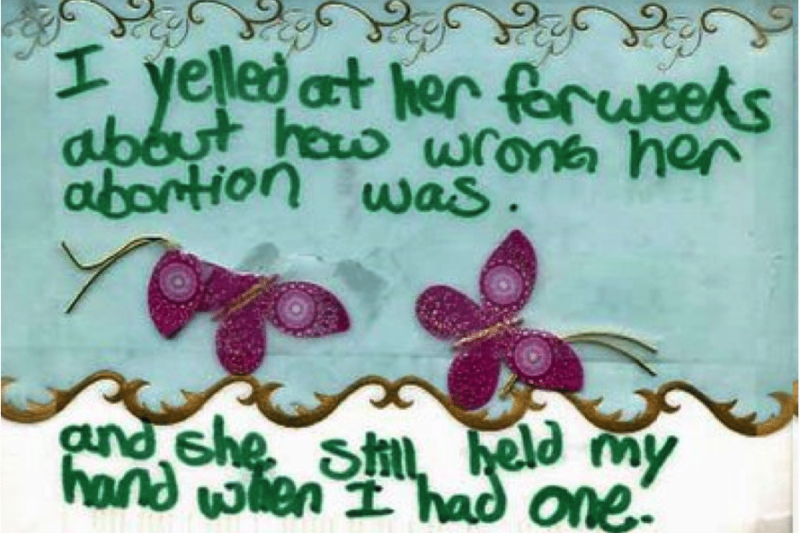Making Progress Toward Destigmatizing Abortion
How can we use all the data we have to create programs that actually make a dent in abortion stigma?

Abortion stigma is a complicated phenomenon. It affects abortion providers, people who have abortions, and even abortion rights activists, all in different ways. Tackling abortion stigma, especially in our current political climate, is a difficult but necessary task.
For people who have abortions, stigma may negatively affect their mental health after an abortion. Stigma also makes it difficult for people to talk about their abortion experiences, even with those they normally trust. For abortion providers, stigma makes it difficult for them to disclose the type of work they do and seek support from their families and communities. Advocates, researchers, and anyone who supports people who have abortions or abortion providers may experience stigma in the form of difficulty finding funding for their research or organization based on their association with abortion.
Scholars and advocates have both spent the last few years defining and documenting abortion stigma among different groups of people. Recently, the Guttmacher Institute released a new study that parses out how different women experience abortion stigma. The researchers found that Catholic and Protestant women experience higher levels of stigma compared to non-religious women, that Black women were less worried about judgment related to their abortion than white women, and that women who had previously given birth had fewer worries about judgment than women who had never given birth.
What can we do with this data? How can we use it to create programs that actually make a dent in abortion stigma? We have clear definitions of abortion stigma and diverse chronicles of how this phenomenon affects different people (although certainly more is needed). What we don’t have is evidence of what interventions work and don’t work to decrease abortion stigma, with whom, and why.
Kate Cockrill at ANSIRH is working on a study called Reading Women’s Lives, in which she recruited 13 women’s book clubs and had them read a book called Choice, which contains 23 non-fiction stories of experiences with pregnancy. Participants took both quantitative and qualitative surveys about their pregnancy history and attitudes toward different reproductive health experiences, including abortion. Trained researchers (myself included) went around the country recording book club discussions of Choice, observing and not directing the conversations. Many book clubs contained at least one person who’d had an abortion, and in most circumstances, that person discussed her experiences, often for the first time. After looking at the surveys, we found that the women who expressed the most prejudicial attitudes toward abortion actually had the most improved attitudes after the discussion of the book, and that these improved attitudes remained four months later. Putting women who haven’t had abortions in contact with women who’ve had abortions in an intimate setting like a book club enabled the reduction of prejudicial attitudes towards abortion (for more on the theoretical basis of this study, read about Gordon Allport’s contact theory).
Of course, book clubs as an area of study are limiting; they are comprised mostly of older, white, and heterosexual cisgender women. We need more interventions like the book club study in diverse contexts, where people are in spaces that encourage openness, curiosity, and empathy. We need to find spaces that enable people to be vulnerable and share their experiences with abortion without feeling like they are putting themselves in danger, emotionally or physically. Creating and nurturing these spaces, in addition to measuring and evaluating stigma reduction programs, will be paramount in figuring out the most effective strategies to reduce abortion stigma.
ANSIRH isn’t the only organization thinking creatively about interventions that decrease abortion stigma. Ipas, Exhale, Advocates for Youth, Preterm Clinic, and the Abortion Conversation Project are all pioneering innovative strategies and programs to reduce stigma around abortion, particularly for people who’ve had personal experiences with abortion. The key to figuring out if any of these interventions are successful will be measurement: Who did the program target? What were their attitudes about abortion before and after the program? Did their attitudes change, and if so, did those changes remain over time? Working together using the data we have now, researchers and advocates can create, measure, and evaluate evidence-based strategies to reduce abortion stigma.
